Children tell of neglect, filth and fear in US asylum camps
May 25, 2021 · By Hilary Andersson and Anne Laurent for www.bbc.com
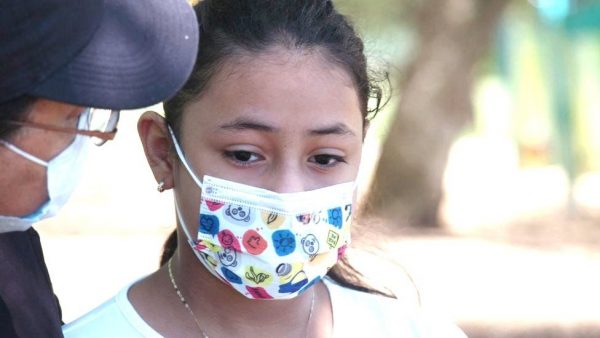
Ariany spent 22 days in detention
Children tell of neglect, filth and fear in US asylum camps
The US has a vast system of detention sites scattered across the country, holding more than 20,000 migrant children. In a special investigation, the BBC has uncovered allegations of cold temperatures, sickness, neglect, lice and filth, through a series of interviews with children and staff.
It was midnight on the Rio Grande – the imposing river that forms the border between Texas and Mexico – and lights began to flash on the Mexican side. Voices could be heard in the darkness. Figures emerged, got into a small raft, and began to cross the river.
As the raft appeared on the US side, the faces of the migrants became visible. More than half of them were children. Over March and April, more than 36,000 children crossed into the US unaccompanied by an adult. This was a record high for recent years.
Many children travelling alone set out on their journey hoping to reunite with a parent already in the US. More than 80% of them already have a family member in the country, the US government says.
President Joe Biden has opened the border to unaccompanied children seeking asylum, somewhat relaxing former President Trump’s policy of turning migrants away due to Covid-19.
The children scrambled up the banks, exhausted. Two young cousins held hands. Another youth, Jordy, 17, said he had fled Guatemala because he was afraid of violent gangs operating there. But tonight he was frightened about what might await him in migrant detention centres in the US. He said he had heard stories about them.
“They will put us in an icebox and ask us questions,” he said.
The so-called “iceboxes”, notorious among migrants, are extremely cold rooms or cubicles in US Border Patrol migrant processing facilities.
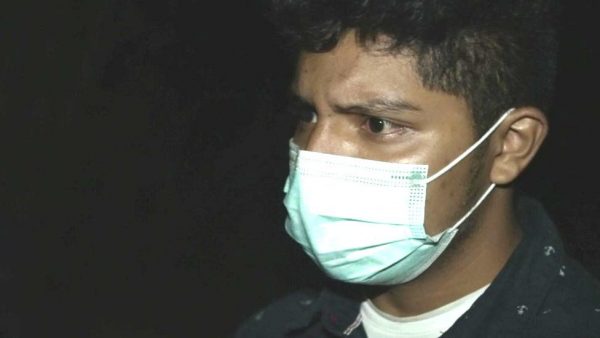
Jordy said he was escaping gang violence
Jordy was told to join a line with other children. US Customs and Border Protection (CBP) guards were taking the children’s shoelaces and belts, a process usually reserved for prisoners to prevent them trying to take their own lives.
Jordy and the other children were then taken away by bus into the night. They were to join more than 20,000 migrant children now in US detention, held in a series of extensive camps around the country, at least 13 of which are new.
In late March, CBP released disturbing images of cramped conditions within one particular facility it runs in Donna, Texas – a mass of enormous white tents looming above the small town. The facility was designed to hold 250 people but housed more than 4,000 at peak occupancy.
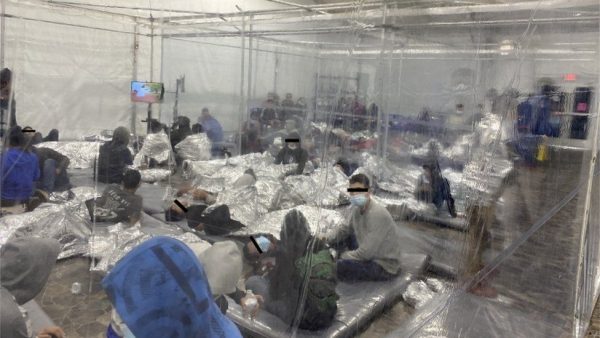
The Donna temporary facility pictured in late March
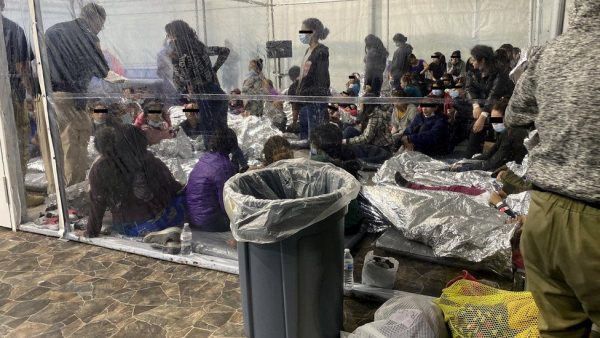
People are seen separated by plastic sheeting in makeshift rooms
Journalists have not been allowed to talk to the children inside. Instead we have been tracking down the children who have been released, to find out about conditions in US detention sites.
Ten-year-old Ariany, who crossed into the US alone, spent 22 days in detention this spring, most of them in the Donna camp. She was crammed into a plastic cubicle – as were scores of other children, from toddlers to teens – wrapped in a silver emergency blanket.
“We were very cold,” she said. “We had nowhere to sleep so we shared mats. We were five girls on two mats.”
Ariany was finally reunited with her mother, Sonia, in late March.
She had passed her mother’s contact details onto US officials who were able to locate her. Sonia had fled Honduras six years ago with her son due to gang violence, leaving Ariany – who was too young at the time to make the journey – behind with her older sister.
Cindy, 16, also held in Donna this spring, said there were 80 girls in her cubicle and that she and most of the children were wet under their blankets, due to dripping pipes.
“We all woke up wet.” She said. “We slept on our sides, all hugged, so we stayed warm.”
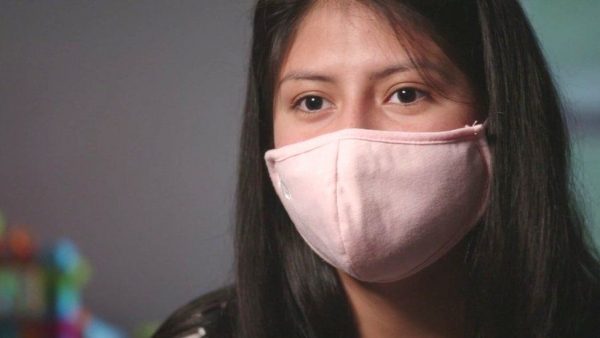
Cindy was held in a cubicle with 80 other girls
A number of children, including Ariany and Paola, a 16-year-old also released from Donna, told the BBC that they were given food that had expired, or was rotten or not cooked properly.
They told us that many children became sick.
“Some girls fainted,” said Jennifer, who was 17 at the time of her detention.
Some girls in Donna were able to shower once a week, but others said they did not shower for several weeks at a time. Paola struggled with the filth.
“I started to feel my head itching, and I realised that it was not normal. They checked my head and told me that I had lice.”
With children eating and sleeping in close quarters, the cubicles quickly became rancid. Ten-year-old Ariany said the guards threatened the children if they did not keep their cramped quarters clean.
“Sometimes they would tell us that if we were doing a lot of mess, they were going to punish us by leaving us there more days,” she said.
At night, the children said, the tents were filled with the sounds of crying.
“We all cried, from the youngest up. There were two-year-old, or one-and-a-half-year-old babies, crying because they wanted their mother,” said Cindy.
Paola said she tried to help the younger ones, but was also worried that she herself would never be reunited with her mother.
“They cried in front of me, and I just tried to comfort them and tell them that one day we would get out of there – although sometimes inside me I had doubt, because [the staff] would not ask me for my mom’s number, her address, and I felt bad too,” she said.
Flights moving thousands of children
And then one day Cindy began to deteriorate and feel ill. She tested positive for Covid-19, as have a startling number of migrant children in detention. Health and Human Services (HHS) reports more than 3,000 coronavirus cases among migrant children in Texas alone since last year. It is not known what the total number of cases is in the new emergency detention sites around the country.
Eventually Cindy, without being told where she was going, was transferred with 40 other Covid positive children onto bus, then plane, and flown 2,400km (1,500 miles) away to San Diego, California. They were taken to a new detention site – a convention centre with the capacity for almost 1,500 children – with row after row of flimsy camp beds.
She says she was kept away from the healthy children, in a section full of children with Covid. She said conditions were better than at Donna, but it was still days before she was able to shower.
Who are the children?
- Persecution, gang violence and organised crime, losses from natural disasters (including two Central American hurricanes in 2020), and poverty are all causing parents to send their children to seek refuge in the US. Migrants are vulnerable to exploitation and sexual abuse along the way
- Most are teenagers from Guatemala, Honduras or El Salvador, though some are reported to be as young as six or seven
- They are either sent by relatives on their own, or with people smugglers who charge thousands of dollars, though reports suggest some families accompany the children to the border and then send them across alone to improve their chances of US entry
- Most have family members already in the US, about half of whom are a parent
- Only 4.3% of unaccompanied minors seeking asylum have been deported since 2014
Read more: https://www.bbc.com/news/world-us-canada-57149721






